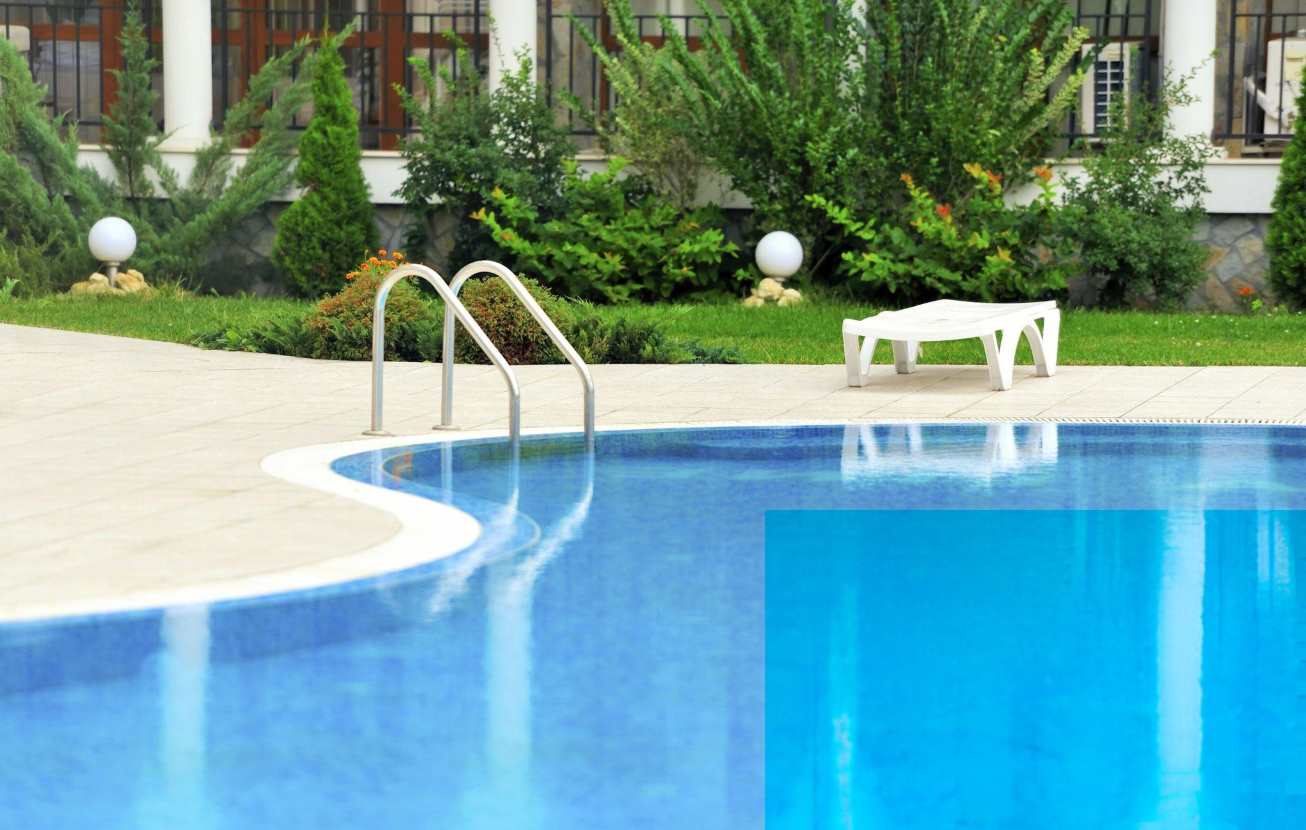Creating Your Personal Pool Paradise: An Ultimate Design Guide
Dreaming of a sparkling pool as the focal point of your outdoor living space? You’re in good company. A beautifully crafted pool can elevate your backyard into a personal oasis, offering a haven for relaxation, fitness, and fun.
However, bringing this vision to life demands thoughtful planning and strategic decision-making. Read this guide to find out the key elements of pool design, ensuring you craft the ideal aquatic escape for your home.
Contents
Understanding Your Pool Project
Before diving into the design process, it’s crucial to consider several factors that will shape your pool project:
Available Space: The size and layout of your backyard will significantly influence your pool’s design. Measure your outdoor area carefully, keeping in mind space for poolside lounging, landscaping, and any required setbacks from property lines.
Climate Considerations: Your local climate plays a vital role in pool design. In colder regions, you might want to incorporate heating systems or opt for an indoor pool. Warmer climates might call for cooling features like waterfalls or shade structures.
Budget: Establish a realistic budget that covers not just the initial construction but also ongoing maintenance and potential upgrades. Remember, a pool is an investment in your property and lifestyle.
Intended Use: Consider how you plan to use your pool. Is it primarily for exercise, relaxation, or entertaining? Your pool’s purpose will guide many design decisions.
Exploring Pool Types and Materials
Pools come in various types and can be constructed from different materials. Understanding these options will help you make an informed decision:
In-Ground Pools:
- Concrete: Offers ultimate customization but requires more time to install.
- Fiberglass: Pre-formed shells that are quick to install and low-maintenance.
- Vinyl: Affordable and customizable, but the liner needs periodic replacement.
Above-Ground Pools: A more budget-friendly option that can be installed quickly. They’re ideal for those who may move or have limited space.
Natural Pools: Eco-friendly options that use plants and biological filters instead of chemicals to maintain water quality.
Designing Your Pool’s Shape and Style
The shape and style of your pool should complement your home’s architecture and your personal taste:
Geometric Shapes: Rectangular, square, or L-shaped pools offer a classic, elegant look that suits modern and traditional homes alike.
Freeform Shapes: Curved, organic shapes create a more natural, resort-like atmosphere.
Infinity Edges: Create a stunning visual effect, perfect for properties with scenic views.
Lap Pools: Long, narrow pools ideal for exercise and properties with limited width.
Enhancing Your Pool with Features
The right features can elevate your pool from ordinary to extraordinary:
Water Features: Waterfalls, fountains, and bubblers add visual interest and soothing sounds.
Lighting: LED lighting systems can create ambiance and extend pool use into the evening hours.
Spa Integration: Incorporating a spa or hot tub adds year-round enjoyment and relaxation.
Beach Entries: Gradual, sloped entries mimic a beach shoreline and are great for young children or those with mobility concerns.
Tanning Ledges: Shallow areas perfect for lounging in the water.
Prioritizing Safety and Maintenance
Safety should be a top priority in any pool design:
Fencing: Install proper fencing with self-closing gates to prevent unauthorized access.
Non-Slip Surfaces: Choose deck materials that provide good traction when wet.
Depth Markers: Clearly mark water depths to prevent accidents.
Covers: Invest in a quality pool cover for safety and to reduce maintenance.
Maintenance considerations are also crucial:
Filtration Systems: Choose an efficient filtration system to keep your pool clean.
Automated Cleaning Systems: Consider robotic cleaners or in-floor cleaning systems to reduce manual maintenance.
Chemical Management: Decide between traditional chlorine systems, salt chlorination, or alternative sanitization methods.
Creating the Perfect Poolscape
Your pool area extends beyond the water’s edge:
Decking: Select materials that are durable, attractive, and complement your home’s exterior.
Landscaping: Incorporate plants, trees, and hardscaping elements to create a cohesive outdoor living space.
Outdoor Kitchens: Consider adding an outdoor kitchen or bar area for entertaining.
Shade Structures: Pergolas, umbrellas, or cabanas provide necessary shade and add architectural interest.
Once you’ve finalized your design, prepare for the construction phase:
- Obtain necessary permits and approvals from local authorities.
- Choose a reputable pool contractor with experience in your desired pool type.
- Establish a clear timeline and communication plan with your contractor.
- Prepare for some disruption to your property during construction.
- Plan for landscaping and finishing touches to complete your backyard oasis.
Conclusion
As you embark on this exciting journey of pool design, remember that you’re not just building a pool – you’re creating a personal retreat that will become the heart of your outdoor living space. Each decision you make, from the curve of the pool’s edge to the texture of the decking, contributes to a unique environment that reflects your lifestyle and enhances your daily life.
While the process may seem complex, the reward is immeasurable. Your pool will become a backdrop for countless memories, from lazy summer afternoons to lively gatherings with friends and family. It will be a source of joy, relaxation, and wellness for years to come.

